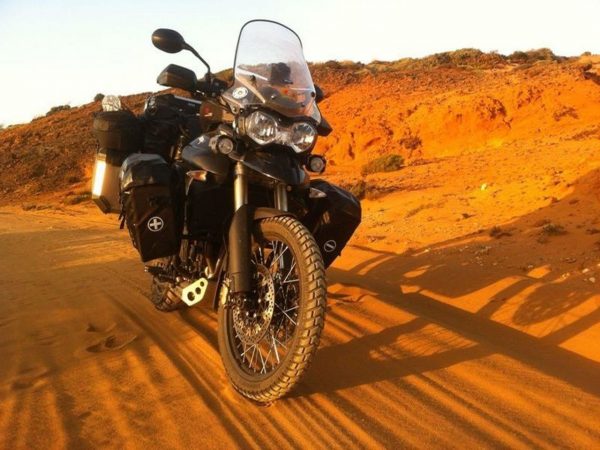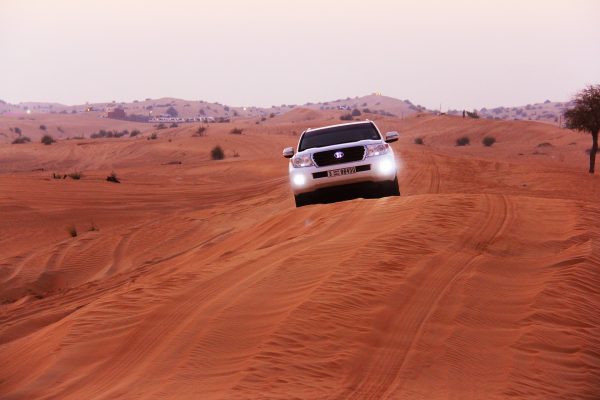If you’re heading overseas to America, the Middle East or Australia it’s possible to drive in a hot, dry desert, but you’ll need to be prepared as every year numerous people get into trouble being underprepared for making their way by car or motorbike through these arid landscapes.

- Tell someone where you are going. They should know who to call if you don’t check in with them by a certain time
- Charge your devices. Keep your cellphone charged using an in-car charging cable or take a spare battery pack
- Check the vehicle’s fluids – water and coolant. When the outside temperature is 45 degrees Celsius, your car or bike will struggle to stay cool
- Inflate your tyres to the correct pressure (and don’t forget the spare tyre). Under-inflated tyres generate much more heat. Add the heat from the road and you can see fast tyre degradation leading to delamination and punctures
- Take a sun visor. Some kind of shield to block your windscreen while you are parked will help keep the inside of your vehicle cooler
- Take a tarpaulin. They are useful for covering the whole car, creating shade or sitting on (great for areas where they might be stinging ants)
- Take basic repair items and tools. A knife, some spanners, a bottle of radiator sealant, some rubber gloves, some rags, some oil and other items will cover you for minor emergencies.
- Take plenty of water. Water to drink and water for the car.
- Take enough food for a couple of days just in case you get stuck
- Wear the right clothing. If you’re riding a motorbike you’ll need protective riding gear which is good for the road but doesn’t make you overheat. In a car, you have more choice but remember that in deserts it gets very cold at night, so taking some blankets is a good idea
- Deal with fatigue. Get plenty of rest before you start and take breaks along the way.
- Plan your fuel stops. Do you have enough fuel to get between petrol stations? Fill up when you can as it can be a long drive between supplies
- Park in the shade. The interior and exterior of your car or motorbike will heat up very quickly and can actually burn your skin
- Everyone out of the vehicle. Never leave children or pets in the vehicle when you leave it as the temperature can spike to more than 30 degrees more than the outside temperature within a matter of minutes. That means 70 degrees if it’s 40 degrees outside. Opening the windows doesn’t make that much difference.
- Watch for slippery patches. Tar bleed, where molten tar rises to the surface, is treacherous. Areas of light dust on hard surfaces can be slippery. If it rains after a long dry spell, the road will lose 50% of its grip.
- Dust storms. If you can outrun a dust storm, do it, but if you get caught in one, it’s best to stop and wait for it to pass. Motorcyclists should seek shelter if possible. Driving in a dust storm pulls dust-laden air through the engine.
- Flash floods can occur when the land is dry and hard-packed. Don’t camp in dry river beds. If you come across a raging torrent, evaluate whether you need to cross as a car can be washed away in as little as 30cm of fast flowing water.
- Breaking down. Pull over to the side of the road, open your boot and bonnet and call for help. If your cellphone doesn’t work, wait with the vehicle unless you can see a house less than a few hundred metres away (dehydration can come on extremely quickly in the desert and people have died trying to walk from their broken down vehicles.) It’s easier for rescuers to see a broken down vehicle.
Read some extra tips for riding a motorbike in hot weather.

